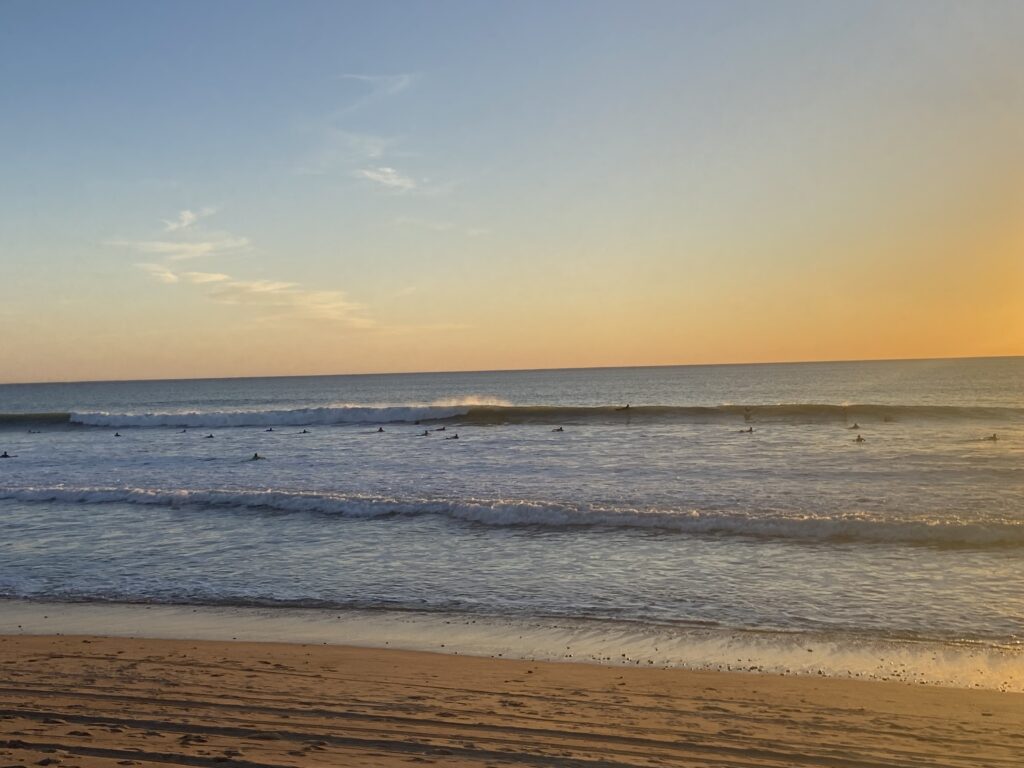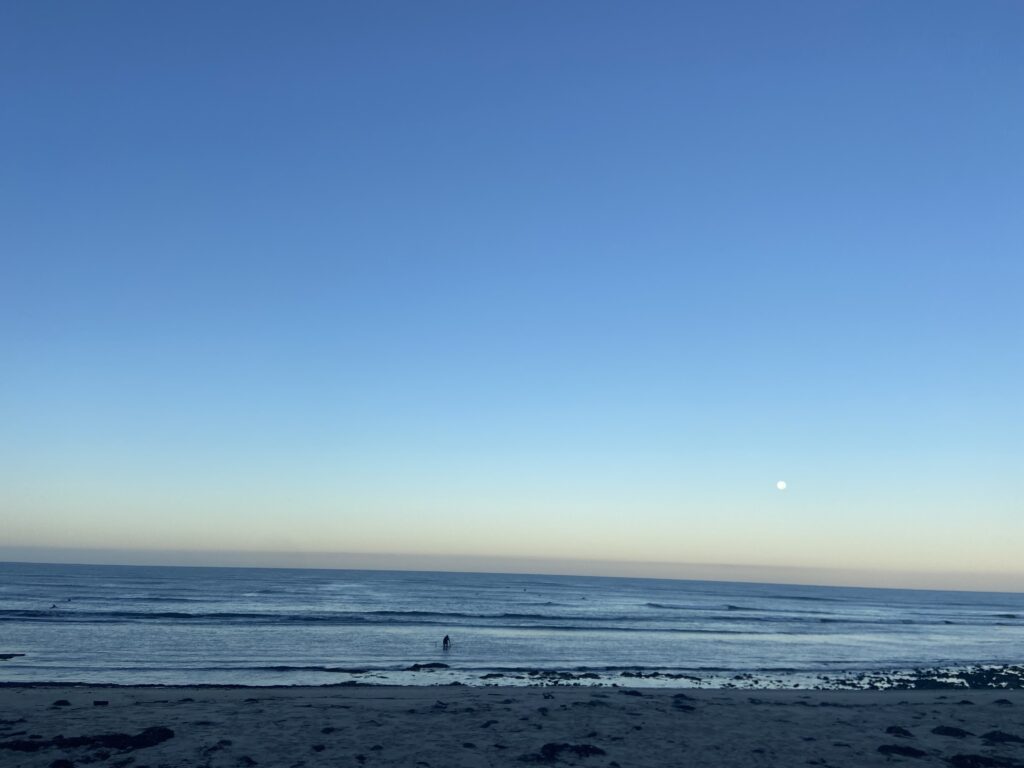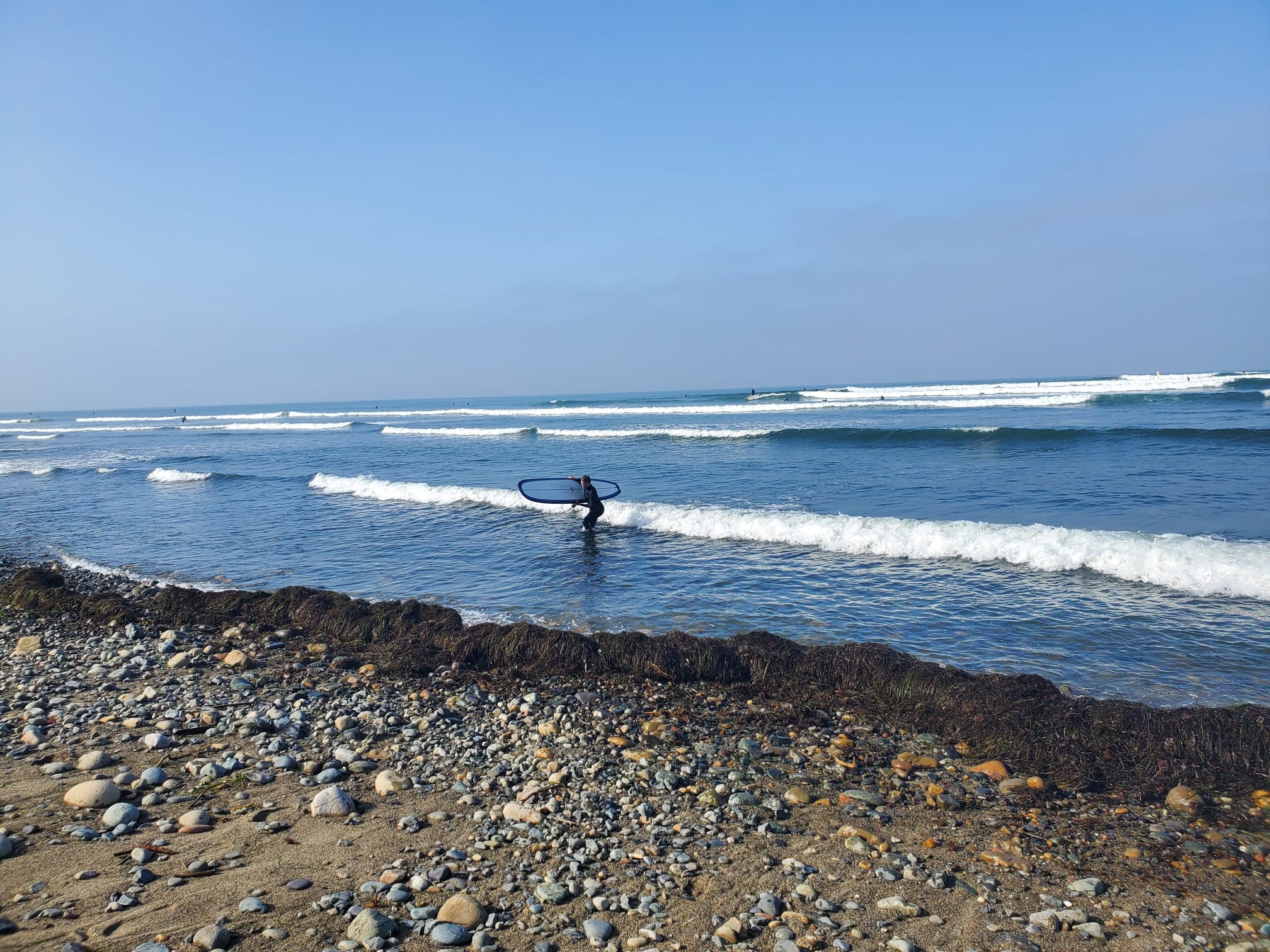These tips will help you have fun, be safe, and make friends during your surf trip to San Clemente. You may want to bookmark this page for future reference. They are vital, after all.
Surfers have a lot in common with each other. In theory, they should be immediate friends. Unfortunately, that’s not always the case when the urge to compete for waves overcomes even the best of us. Plus, surf breaks get more congested all the time.
Surfing is not like driving a car on a road that has lanes defined by bright yellow lines painted on the asphalt. But understanding the protocols of surfing is essential so that everyone is safe and has fun, even when you surf here in San Clemente. So call them what you want — the rules of surfing, surf etiquette, or surf tips — the point is to enjoy your time in the water safely and maybe make some new friends.
Gerry Lopez’s advice for surfing: share
A key point is to have the proper mindset when you go surfing. The legendary Gerry Lopez was a fierce competitor, known as "Mr. Pipeline" for his dominance over the treacherous wave in Hawaii. Now, he understands the wisdom of sharing waves. In an interview with Guy Kawasaki, Lopez explains:
We have a wave here in our little town in Bend, Oregon that when we go surfing in the summer, I’ve wondered why everybody was having such a good time … there was no tension.
… I realized, wow, it’s because everybody knows whose turn it is, because you wait in line until it’s your turn. And in the ocean, you get so many guys that think, “Oh, not enough waves for me.” And that’s why they was like me when I was young, just take waves instead of share. And that’s a real interesting part of surfing. Eventually, you learn, but sometimes it takes a long time.
And so in the "aloha spirit" of Gerry Lopez, we share the following surf tips.

Surf Tip #1: do your homework
This goes for surfers of all levels because continuing education is also important: spend time doing your homework before you get in the water. Reading this page helps. Watch videos on how to improve your surfing. Barefoot Surf makes high-quality videos, especially for beginners. Professional longboarder Ben Considine makes excellent videos for more advanced surfers.
Additionally, this eight-minute video is particularly good to demonstrate surf etiquette, the dos and don'ts of surfing. In it, photographer Brad Jacobson is entertaining and informative.
Furthermore, Rob Case (www.surfingpaddling.com) provides more context to that video with this blog post which we also recommend. Also check out Surfline’s page on Surf Etiquette — it’s easy to read with helpful vOnce you’ve done this homework, all other rules come next. 😉
Surf Tip #2: ABP, Always Be Paddling
This rule requires a bullet list of sub-topics because it’s so important for so many reasons. Surfing requires physical stamina. No matter how many years you’ve been surfing, if you haven’t been in the water for a while, realize that you’re going to need to build up that strength again. We can’t think of any other sport or activity in which you drag yourself around by your arms. Don’t take that (or your body) for granted.
These tips are (sort of) in chronological order but not necessarily (hence the bullet points, not numbers):
- Learn how to paddle efficiently so you can move quickly when needed. This video is excellent. Watch it on repeat. Get into a zone where waves aren’t crashing on your head and practice this skill.
- Learn where to paddle out. Find a channel. Don’t paddle into the impact zone just because that’s the shortest path.
- Know which direction to paddle if you’re going to get caught under a wave. If someone is riding that wave: you will likely have to paddle towards the white water, especially if you can’t get over the wave without cutting off their ride. In general, paddle away from the direction they are surfing. (Watch the embedded video above.)
- Know when to paddle out. Go between sets, when it’s not too strong.
- Get out if the waves are too much for you. Period. (One of us has had to learn this lesson the hard way, with regret.)
- Learn how to duck dive or turtle roll (and make sure you’re strong enough to hold your board if the current is strong).
- Paddle. Don’t just sit there (especially if someone is on a wave headed straight towards you).
- Keep your board facing into the waves. Don’t sit with your board parallel to the beach (face or paddle towards the back). If you’re facing parallel, it’s all that more likely that your board will get run over.
- Paddle outside or away from the impact zone if you see a big set coming. That also means you must always be watching for big sets. (Don’t get distracted.) You’ll thank yourself every time.
Surf Tip #3: Understand the Lineup
Not all lineups are the same. Some are rigid, with a well-defined take-off zone (think point breaks). Some peaks shift, which can complicate who has priority. If it’s a fixed take-off zone, get in line and wait your turn. For insight and entertainment, read "Understanding the Comical Complexities of a Surf Lineup," written by Evan Quarnstrom for The Inertia.
Yes, it's tricky, but always try to understand who has priority (generally the person closest to the peak with the longest ride) (that can get muddled especially on A-frame waves when some go left, some go right, or if someone catches the wave behind the peak). Do your best.
Party waves are acceptable in some places. That requires clear communication and really isn’t recommended.
It helps to assess the other surfer's skill level and make adjustments accordingly.
Don’t assume you have priority just because you’re still learning and are excited you actually caught a wave (it sucks, but if you weren’t fast enough or not in the right place, you gotta get faster and know how to position yourself). Work harder, don’t cheat, it’ll make you a better surfer, and you’ll be glad in the end.
Don’t assume you have priority just because you’re a stronger surfer and have the ability to catch that wave. If a weaker surfer is in the right position, give them a chance. They might miss that wave. But be patient. Don’t cheat. It’ll make you a better surfer, and you’ll thank yourself in the end.
Surf Tip #4: Do Not Drop In
Last, but definitely not least, don't drop in on another surfer's wave. Look both ways! Before and after catching any wave!
If you realize you’ve dropped in on someone, drop off as soon as possible. Apologizing sincerely will go a long way. Learn how to drop off a wave, if needed.
This rule is about courtesy: let the surfer with priority enjoy that wave to its fullest potential. More so, though, it's about safety. Surfers have sustained serious injuries due to reckless drop-ins by other surfers. We'll have more on this issue in a later blog post.
P.S., If you’re on a wave headed straight toward someone in the water who isn't able to move out of the way (maybe they wiped out and were not able to recover yet), you should also be prepared to drop off. (Ditto, learn how to drop off a wave, if needed.)
Surf Tip #5: Keep the stoke
Surfing is very hard. It can be easy to forget the point of this magical sport which is to have fun.
Remember to breathe.
Remember to share the joy.
Remember the stoke.

Helpful surf resources
Keep these links to helpful sites and pages that provide surf tips, etiquette, and guidance.
- Barefoot Surf, YouTube Page
- Rob Case: “Best Etiquette Video I’ve Seen in a While”
- Ben Considine: YouTube Page
- Brad Jacobson: “Are the Unwritten Rules of Surfing Being Tossed?”
- Surfline: Surf Etiquette

Leave a Reply